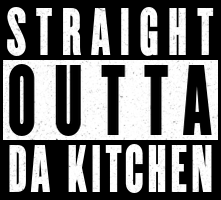
The History of Pickleball: From Backyard Game to Global Sensation
Share
Pickleball, a sport that combines elements of tennis, badminton, and table tennis, has grown into one of the fastest-growing recreational activities in the world. But its origins are humble, rooted in a simple backyard game born out of necessity and creativity. Here's a look at how pickleball began and evolved into the sport we know today.
The Beginning: 1965 on Bainbridge Island
The story of pickleball starts in the summer of 1965 on Bainbridge Island, Washington. Joel Pritchard, a U.S. Congressman, and his friend Bill Bell, a successful businessman, were trying to entertain their families over a weekend. Looking for a way to pass the time, they decided to create a new game using equipment they had on hand.
Pritchard and Bell found a badminton court but couldn’t locate enough badminton equipment. Improvising, they picked up ping-pong paddles and a perforated plastic ball, lowering the badminton net to accommodate the new setup. The makeshift game sparked enthusiasm, and over time, it became more structured and popular among their friends and families.
The Early Evolution
As the game grew in popularity among the Pritchard and Bell families, they made several key changes. First, the net was permanently lowered to 36 inches at the ends and 34 inches at the center, which is close to the net height used in pickleball today. Second, they introduced new rules that blended aspects of tennis, such as serving underhand and playing within a clearly defined court. The size of the court was eventually set at 20 by 44 feet, the same dimensions used in badminton doubles.
A short time later, Barney McCallum, another family friend, became involved in shaping the game. Together with Pritchard and Bell, McCallum helped to formalize the rules, and in 1967, they built the first permanent pickleball court in Pritchard’s backyard.
The Name: Why Pickleball?
One of the most enduring mysteries of the sport is how it got its quirky name. There are two competing stories. One version claims that the game was named after Pritchard’s dog, Pickles, who would chase the ball and run off with it during games. However, the other, more widely accepted explanation is that Pritchard’s wife, Joan, coined the term “pickleball” because the combination of different sports reminded her of a pickle boat in rowing, where oarsmen were chosen from the leftovers of other boats.
The Growth and Popularity of Pickleball
By the early 1970s, pickleball was gaining traction in the Pacific Northwest. In 1972, a corporation was formed to protect the game’s integrity and oversee its growth. The first known tournament took place in 1976 at South Center Athletic Club in Tukwila, Washington. From there, the sport began to spread across the U.S., particularly in retirement communities where players enjoyed its relatively low physical impact and social nature.
In 1984, the United States Amateur Pickleball Association (USAPA) was formed to promote the sport and standardize the rules. This marked a key moment in pickleball's transition from a regional pastime to a national sport. As interest continued to grow, the USAPA began sanctioning tournaments, organizing events, and creating official player rankings.
Modern Pickleball: A Global Sport
The 21st century has witnessed a pickleball explosion. As of the 2010s, pickleball had not only spread across the U.S., but had also found a following internationally, with players in Canada, Mexico, Europe, and Asia. The sport is particularly popular in senior communities, where it is appreciated for its moderate physical demands, but it has also found a diverse following among all age groups.
Today, pickleball is played on over 35,000 courts across the U.S. alone, with millions of players worldwide. Tournaments have become more competitive, with professional players emerging and major events like the US Open Pickleball Championships and the USA Pickleball National Championships drawing large crowds.
In 2019, the International Federation of Pickleball (IFP) was founded, and in 2020, pickleball made its debut on ESPN, further cementing its status as a mainstream sport. The COVID-19 pandemic in 2020 also contributed to a surge in pickleball’s popularity as people sought out outdoor activities that could be played with social distancing.
Conclusion
From a backyard invention in 1965 to a global phenomenon, pickleball has come a long way. What began as a spontaneous attempt to cure boredom has evolved into a structured and competitive sport, enjoyed by people of all ages and skill levels. Its rapid growth shows no sign of slowing down, as pickleball continues to draw in new players and fans with its unique blend of simplicity, strategy, and fun.
